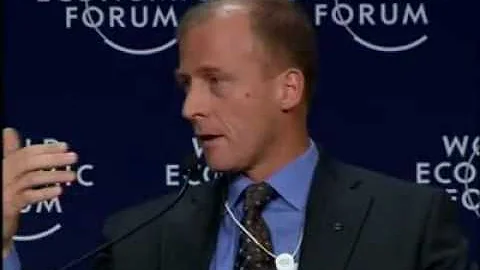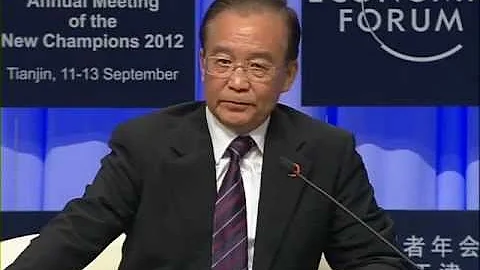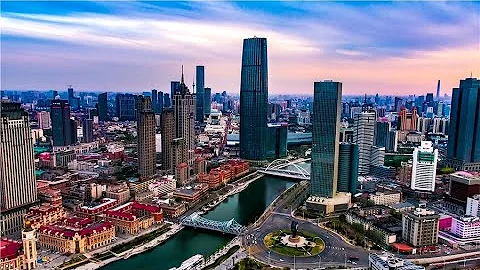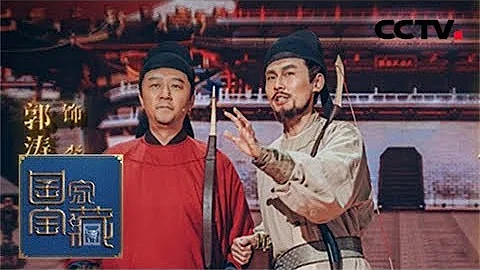Author Guquan Wenku
The full name of Tianjin Mint is "Tianjin Mint of the Ministry of Finance of China", which is the central mint of the Beiyang Government of the Republic of China.
Tracing its origins back to the "Prime Minister Beiyang Machinery Bureau", the earliest minting units in Tianjin were set up in different places and times. They were destroyed, rebuilt and merged many times until the first year of the Republic of China. The Beiyang Government Beiyang Mint and Mint were merged to form
. The first stage: Beiyang Machinery Bureau and Beiyang Silver Dollar Bureau
In March 1867 (the sixth year of Tongzhi), the base site of Jiajiagu Road in the east of the city was selected. bureau. The East Bureau built forty-two factories with more than 290 rooms, and more than 300 offices and residences for craftsmen employees, covering an area of 2,230 acres. This was the beginning of modern Western-style machinery in the North.
It officially started in May 1867, and Mitos was appointed as the general manager. Later in the same year, the "South Bureau" (also known as the "West Bureau") was established at the base of Haiguang Temple in the south of the city. The two are commonly known as " Tianjin Machinery Bureau ".


"Complete Map of Tianjin Chengxiang Baojia" painted in the 25th year of Guangxu's reign. The red arrow on the upper right side of the map points to the location of the "Machine East Bureau"
February 24, the 22nd year of Guangxu's reign (1896), at Ren Zhili Governor Wang Wenshao reported that "Beiyang is a treaty port. At this time when money is cheap and silver is cheap, the market is quite tight. If we can mint large and small silver coins, circulate them, and benefit people's livelihood, it will be a big deal." So Beiyang The Machinery Bureau first used old copper coin machines to renovate three types of small silver coins: two-cent, one-cent, and half-cent, and then purchased one-yuan and five-cent printing machines. This is the Beiyang silver dollar. It is the earliest silver coin in China that is denominated in circles. Due to the casting The time is short and the total amount is about 7,000 yuan.

In the twenty-sixth year of Guangxu's reign (1900), the Boxer Rebellion broke out. At the end of June, the Eight-Power Allied Forces invaded Tianjin. The Beiyang Machinery Bureau was devastated and was never rebuilt. After the Beiyang minister, he approved the construction of a new arsenal in Dezhou, Shandong. Construction started in the 30th year of Guangxu (1904) and was named Beiyang Machinery Manufacturing Bureau. It was still referred to as Beiyang Machinery Bureau, but it had nothing to do with coinage thereafter.

Beiyang Machinery Bureau produces bullet shell bottoms
The era of Beiyang Machinery Bureau ended. A few years later, the era of Beiyang Silver Dollar Bureau ushered in.
Beiyang Silver Dollar Bureau:
In the 28th year of Guangxu's reign (1902), Yuan Shikai set up a bureau in Xiyaozhu, Hebei Province (now the former site of Dabei Zen Temple in Tianjin). It was initially named "Beiyang Silver Dollar Mining Bureau" and was later renamed "Zhili Hubu Mint". "North Branch Factory" (1906), "Du Branch Mint Factory" (1907), which were later abolished in the second year of Xuantong (1910).

Although it is known as the Silver Dollar Bureau, due to the lack of copper coins in the market at that time, the profit was very high when it was converted to copper coins. Therefore, in terms of quantity, the majority of the products produced were copper coins. In addition to the copper coins with the inscription "Beiyang Guangxu Yuanbao ", it also produced Named after "Hubu". After the founding of the Republic of China, resumed work and merged with the Mint. It was called the "West Factory" and specialized in making copper coins.
The silver coins with inscriptions "Made in Beiyang" in the 29th, 31st, 33rd and 34th years of Guangxu came from here.

In June of the twenty-eighth year of Guangxu (1902), former Finance Minister Zhou Xuexi was asked to organize the Beiyang Silver Dollar Bureau. After many hardships, it was completed in October and was named "Beiyang Silver Coin General Administration", referred to as "Beiyang Silver Coin Bureau". It inherited some of the machines and most of the technical personnel from the Beiyang Machinery Bureau, but the address was different. Copper coins were minted in November, with face values of twenty coins, ten coins, and five coins.
In the 29th year of Guangxu (1903), the Beiyang 29 seven cents and two cents silver dollar was minted. However, due to the "dispute between the two yuan" and the "controversy over the standard", the Beiyang Silver Dollar Bureau did not mint the main coins from Beiyang 30 to Beiyang 32. Silver dollar.
In April of the 32nd year of Guangxu (1906), the Beiyang Silver Dollar Bureau was renamed "Zhili Hubu Mint North Branch".
In August of the 33rd year of Guangxu (1907), the North Branch was changed to the "Du Branch Mint Factory". In the same year, the main silver dollar of Kuping seven coins and two cents was minted, namely Beiyang 33, and Beiyang Kuping one or two coins were minted at the same time. of sample coins.
In the thirty-fourth year of Guangxu (1908), the number and exquisiteness of the Beiyang silver dollar reached its peak, becoming the representative work of the Beiyang silver dollar.
In April of the second year of Xuantong (1910), the Du Branch Mint Factory was abolished, leaving only the fourth branch factory in Wuhan, Guangzhou, Chengdu, Yunnan and Fengtian. At this point, the historical mission of the Beiyang Mint was basically completed (but Beiyang silver coins were still being minted until the early years of the Republic of China).
In addition, in the first year of the Republic of China, a branch factory was opened at the former site of the Beiyang Silver Dollar Bureau to mint copper coins. However, it was no longer the Beiyang Mint, but the Tianjin Mint.
The Second Stage Mint
(the 29th year of Guangxu (1903) - the 3rd year of Xuantong (1911))
Construction background: From the 22nd year of Guangxu to the 29th year of Guangxu, each province followed the practices of Guangdong and Hubei. They minted their own silver coins one after another. Due to the lack of unified regulations, the currency system was chaotic. In the 29th year of Guangxu, in order to rectify the national financial order, the Qing government took back the right to mint coins and ensured the uniformity of copper and silver coins. Therefore, it planned to build the Ministry of Household Mint, commonly known as Mint.

In March of the 29th year of Guangxu (1903), the Ministry of Household Affairs sent Minister of Military Affairs Xu Shichang and Chen Bi, Zhang Yunyan to take charge of the matter, survey the terrain in Tianjin, and prepare for the establishment of the Ministry of Household Affairs. General Mint.
In the spring of the 31st year of Guangxu (1905), the General Mint of the Ministry of Revenue was completed, covering an area of 31,916 square meters. It was originally named "General Bureau of Minting and Coin" because the factory was directly under the jurisdiction of the Ministry of Revenue. Later it was changed to the "Household Mint General Factory". The factory introduced the latest machinery and equipment from the United States, Japan, Germany and other countries. At that time, it was the largest, most well-equipped, and most technologically advanced mint in the country. It was also the country's largest currency manufacturer. center. When the Mint was founded, it planned to mint three kinds of currencies: gold, silver and copper, which were called " Qing gold coins ", " Qing silver coins " and " Qing copper coins ", which were popular all over the world. It has been unified.
In the 32nd year of Guangxu (1906), the merger was first proposed. In addition to the headquarters setting up the main factory, the provincial bureaus were divided into Zhili, Hubei, Jiangnan, Fujian, Guangdong, Fengtian, Henan, Sichuan, The 9 factories in Yunnan were unified under the jurisdiction of the Ministry of Household Affairs; as the Ministry of Household Affairs changed its name to Du Branch, the Mint General Factory was also renamed "Du Branch Mint Factory".
In February of the second year of Xuantong (1910), the Qing government ordered the minting authority It was brought back to the central government and the branch approved that all the silver and copper coin mints in each province were abolished and transferred to the main mint for unified casting. Only the four branches in Wuhan, Guangzhou, Chengdu, Yunnan and Fengtian were left.
April , the Du branch promulgated the "Rules and Regulations of the Currency System" to cast the "Qing Silver Dollar". According to the "Rules and Regulations of the Currency System", "the national currency unit shall be named Yuan", "yuan" will be designated as the unit, and the silver dollar will be designated as the national currency. The standard trend At this point, from the 10th year of Guangxu (1884) to the 3rd year of Xuantong (1911), the 27-year dispute between the silver dollar system and the silver two system of monetary units came to an end, and the standards for casting Qing silver coins tended to be unified.
The Coin Factory minted a large number of silver coins. In the 34th year of Guangxu (1908) alone, nearly 100 million coins were minted. In the 3rd year of Xuantong (1911), about 77 million "Qing silver coins" were minted. A large number of copper coins were also minted. . There are also many formats and varieties of silver coins here. Since they were not approved by the Ministry of Household Affairs, only sample coins were minted. However, silver coins with approved formats were minted in large quantities and used, which promoted currency reform and was a new beginning in China's modern currency history.

In the first year of the Republic of China (1912), the Renzi rebellion occurred. On March 2, the inner factory of the Tianjin Mint was burned down. However, there are still 7 branches in Fengtian, Nanjing, Wuchang, Changsha, Chengdu, Guangzhou, Yunnan and one bureau in Chongqing, a total of 8 locations.
The third stage, Tianjin Mint General
(the first year of the Republic of China (1912) - the 16th year of the Republic of China (1927)
In May of the first year of the Republic of China (1912), the new factory project of the Tianjin Mint General Factory was completed. The branch mint merged with the original Tianjin Mint Factory (formerly Beiyang Silver Dollar Bureau) and was renamed "Tianjin Mint General Factory of the Ministry of Finance of China". The Tianjin Branch Mint Factory (formerly Beiyang Silver Dollar Bureau) was called the West Factory , specializes in casting copper coins; the original branch mint factory is called Dongchang, specializing in casting silver coins. The factory is well-organized and has sophisticated machinery, which can be called the best mint in the country.In the third year of the Republic of China (1914), Wu Dingchang, who was the Minister of Finance of the Kuomintang government and supervisor of the Mint at that time, inscribed the four-character "Mint" on the forehead of the factory.



In February of the third year of the Republic of China (1914), according to the "National Currency Regulations of the Republic of China", the national currency - Yuan Shikai's head silver coin (commonly known as Yuan Datou) began to be minted on December 24. There are mainly series such as the third year of the Republic of China, the eighth year of the Republic of China, the ninth year of the Republic of China, and the tenth year of the Republic of China. This edition is commonly known as the Central Edition and Tianjin Edition.

In the eighth year of the Republic of China (1919), the Currency Bureau of the Ministry of Finance promulgated five articles of the "Measures for Recasting and Casting Silver Dollars". The fourth article stipulates that the silver coins minted by each factory should be issued a model once a year, indicating the year of the Republic of China.
During the Republic of China, the Mint also minted a variety of gold and silver coins in the nature of sample coins and commemorative coins.
sample coins mainly include signature version . This is a trial coin produced by the Tianjin Mint and is not in circulation. The coin has a vertical English letter "L.GioRGi" engraved on the right side of Yuan's portrait, which is the signature abbreviation of the Italian engraver "GioRGi", a foreign coinage expert in China.
"T" side, Yingyang side. These two coins are trial coins produced by Tianjin Mint. The front and back patterns are the same as those of ordinary Yuan Datou in circulation, except that the edge teeth have a "T" shaped edge or an eagle-yang coin-shaped edge.
Commemorative coins mainly include Yuan Shikai Republic commemorative coins, Yuan Shikai Hong Xian coins, Hong Xian first year founding commemorative coins , Xu Shichang commemorative coins, Cao Kun commemorative coins, Duan Qirui ruling commemorative coins, Chu Yupu commemorative coins , Zhang Zuolin commemorative coins, Zhang Xueliang commemorative coins, etc.
In the fifteenth year of the Republic of China (1926), Chu Yupu, the governor and governor of Zhili, ordered the Tianjin Mint to issue new auxiliary coins, and re-adopted the "Twelve Chapter Picture" as the pattern (i.e. " Dragon and Phoenix Silver Coin" two corners, one corner ), once circulated in Beijing and Tianjin. Due to the proliferation of auxiliary coins, the market value of auxiliary coins depreciated, and rectification failed. It was not until June of the 17th year of the Republic of China that Tianjin was occupied by the National Revolutionary Army.

The dragon and phoenix coins are exquisitely carved, and the feathers of the phoenix are all visible. They can be called masterpieces of modern Chinese coins. Some scholars believe that the dragon and phoenix pattern on the front of the coin is actually the national emblem pattern jointly designed by Lu Xun, Xu Shoutang, Qian Daosun and others in the first year of the Republic of China, known as the Twelve Chapter Picture. The pattern contains twelve mascots such as the sun, moon, stars, mountains, dragons, phoenixes, Yi, algae, fire, rice flour, 黼, and 黻, etc., symbolizing the long-term and beautiful national destiny
the fourth stage, commonly known as the Tianjin Mint
The end (the 16th year of the Republic of China (1927) - the 29th year of the Republic of China (1940),
In April of the 16th year of the Republic of China (1927), the Northern Expedition was victorious, the Nanjing National Government was established, and was resolved by the political conference "Stop minting Yuan coins and replace them with coins with the portrait of the former Prime Minister." In June, the Third Army of the National Revolutionary Army occupied Tianjin. The Tianjin Mint stopped minting dragon and phoenix coins and replaced them with new coins with Sun Yat-sen's head, mainly with six stars.


In the 18th year of the Republic of China (1928), the Beiyang warlord government collapsed, and the Tianjin Mint basically stopped production, existing in name only. After the completion of the Shanghai Mint , the Central National Government officially abolished the Tianjin Mint.
Tianjin Mint The last silver coins produced by the factory were the earth coins in the 18th year of the Republic of China and the Sun Xiang Jiahe coins in the 18th year of the Republic of China, one yuan and two cents.
Information and pictures are all from the Internet and compiled by Guquan Library.


Kosen Bunko historical works:
Kosen Bunko founding declaration
Kosen Bunko first type "Shouquan collection"
Kosen Bunko second type "Kosen Encyclopedia"
Kosen Bunko third type "Zuzhaiquan extension"
Kosen Bunko no. Four types of "Furusen Magazine"
Kosen Library The fifth type "Silk Road Collection"
Kosen Library The sixth type "An Overview of Coins of Ancient Countries on the Maritime Silk Road"
Kosen Library The seventh type "Muyuan Hundred and Twenty Spring Extensions"
Kosen Library The eighth type of the library is "Muyuan Diary"
The ninth type of the ancient spring library is "The Collection of Qing Qian in the Forbidden City"
The tenth type of the ancient spring library is "Part 1 of the Shanyin Temple"
The eleventh type of the ancient spring library is "Selected Collection of Hidden Springs by Daimen's Disciples"
Guquan Library The twelfth library, Dong Yu's "Qian Pu"
The thirteenth Guquan library, "Kaiyuan Tongbao Boutique Collection"
The fourteenth Guquan library, "Hengmen Baiquan Tuocun"
The fifteenth Guquan library, "China and Japan" Friendship Spring Friends Exchange Memorial Spring Spectrum"
Kosen Library Category 16 "Commemorative Collection of the First Yuan and Ming Coin Symposium"
Kosen Library Category 17 "Xixia Coins Collection"
Kosen Library Category 18 "Ancient Coins of the Joseon Dynasty" Category 19 of the Kosen Library
"Ancient Coins of Vietnamese History" Chinese version
Category 20 of the Kosen Library "Golden Chamber of Ancient Coins"
Category 21 of the Kosen Library "Showa Spring Genealogy" Chinese version
Shou Quan's works:
"Collection and Extensions of Xuzhai Ancient and Rare Shouquan"
"Collection and Extensions of Keju Jiuzhi Shouquan"
"Extensions to Commemorate the Resumption of Shouquan Meeting"
"Collection and Extensions of Chunfengtang Seventy-year-old Shouquan"
"Wuwei" Collection of Seven Ranks of Longquan and Longquan"
"Selected Collection of Seventy Years of Baifutang"
"Collection of Xuzhai Xishouquan"
"Collection and Collection of Longquanzhai's Seven Ranks of Good Spring"
"Collection and Collection of Fushan Old Man" (under production)
"Collection of the Seventy-year-old Fountain of the Seventy-year-old Song" (under production)












![[ENG SUB] A History of China: 唐代宗教 Religion in the Tang Dynasty 兼容并蓄:唐代的宗教思想 | EP51 | 中国通史 - DayDayNews](https://i.ytimg.com/vi/dVSHOv86XiI/hq720.jpg?sqp=-oaymwEcCNAFEJQDSFXyq4qpAw4IARUAAIhCGAFwAcABBg==&rs=AOn4CLABLVidfgh83c7d28MwDVoDdq4cMA)








